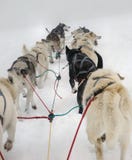Rhino Sleeping. The Rhinoceros Family Is Characterized By Its Large Size (One Of The Largest Remaining Megafauna), With All Of The Species Able To Reach One Tonne Or More In Weight; An Herbivorous Diet; A Thick Protective Skin, 1.5€“5 Cm Thick, Formed From Layers Of Collagen Positioned In A Lattice Structure; Relatively Small Brains For Mammals This Size (400€“600 G); And A Large Horn. They Generally Eat Leafy Material, Although Their Ability To Ferment Food In Their Hindgut Allows Them To Subsist On More Fibrous Plant Matter, If Necessary. Unlike Other Perissodactyls, The African Species Of Rhinoceros Lack Teeth At The Front Of Their Mouths, Relying Instead On Their Powerful Premolar And Molar Teeth To Grind Up Plant Food.[1]
ID 24642614 © Bjlongmore | Megapixl.com
Your image is downloading.
Sharing is not just caring, it's also about giving credit - add this image to your page and give credit to the talented photographer who captured it.:





































